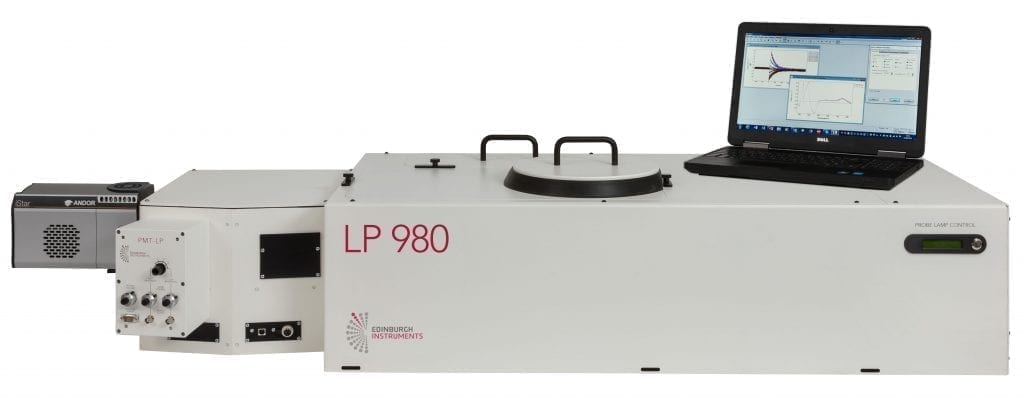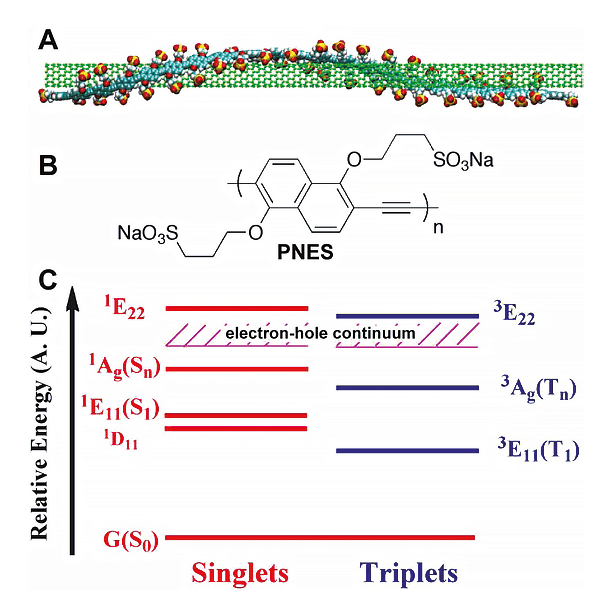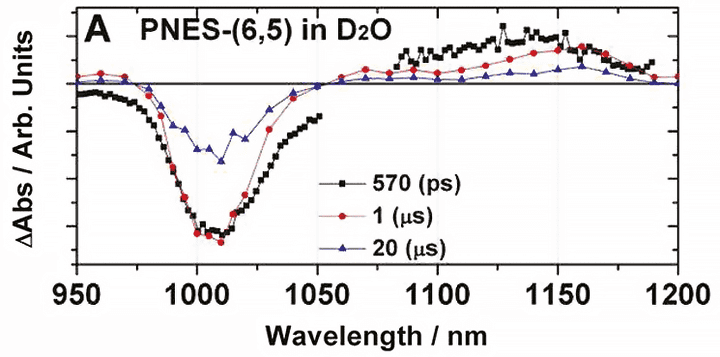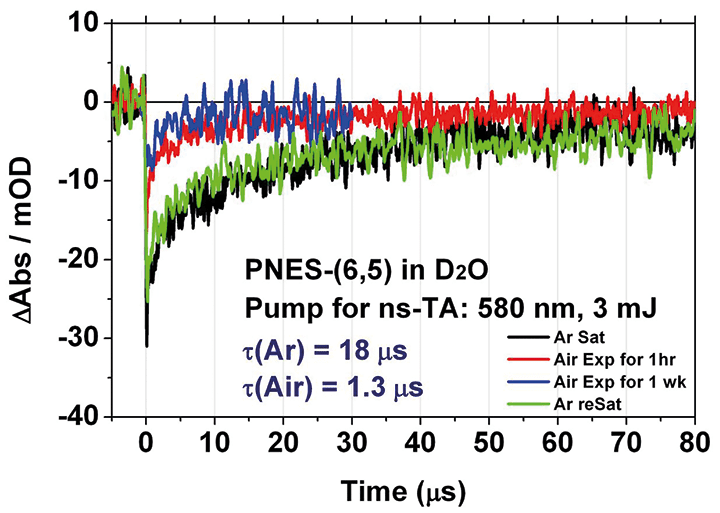SWCNT: Photogenerated Excited States in Solubillized Single-Wall Carbon Nanotubes; Transient Absorption and Oxygen Dependence of the Triplet
Single-walled carbon nanotubes (SWCNT) feature immense tensile and thermal strength with advantageous 1-dimensional molecular wire electronic properties.
Interrogating photophysical properties of novel nanoscale materials is fundamental to designing and developing new devices to advance and pioneer new technologies ranging from medical imaging to printable solar-cells.The Edinburgh Instruments LP980 Transient Absorption Spectrometer is well suited to study these photo-generated excited states, especially with the capability to add near-infrared (NIR) detectors needed to capture the transient species in these materials.

Figure 1: The Edinburgh Instruments LP980 Spectrometer.
SWCNT Research
Researchers at Duke University, in the lab of Prof. Michael Therien, have utilised an Edinburgh Instruments LP980 laser flash photolysis spectrometer equipped with an InGaAs near-infrared (NIR) detector to experimentally observe excited triplet states of individualised single wall carbon nanotubes (SWCNTs) for the first time.

Figure 2: (A) Rendering of PNES-Wrapped SWNTs (PNES-SWNTs), (B) PNES Molecular Structure and (C) the relative excited state energy levels for Semiconducting SWNTs.
In this study, (6,5)-chirality enriched semiconducting SWCNTs that were helically wrapped by an aryleneethynylene polymer monolayer at periodic and constant morphology, were utilized. These polymer-wrapped SWNTs maintain uniform structure morphology in both D2O and DMSO solvents, and provide versatile constructs in which to probe nanotube triplet excited states. These SWCNT triplet states have lifetimes in the order of microseconds, differing vastly from the picosecond lifetimes characteristic of the well-known SWNT singlet states in these unique of 1-dimensional carbon-based nanostructures.

Figure 3: Near-Infrared (NIR) transient absorption spectra of PNES-SWNTs in deoxygenated D20. These spectra were generated from single channel kinetics recorded on an InGaAs detector with sensitivity 2050 nm.
A previously unidentified transient absorption band at 1150 nm is shown to correspond to a SWNT T1arrow-rightTn transition; the lifetime of the SWNT triplet excited state was found to be 17.4 μs and 6.5 μs, respectively, in D2O and DMSO solvents when deaerated by Argon. Air saturated samples displayed much faster lifetimes in the presence of oxygen, a common indicator of a triplet state formation.

Figure 4: Triplet excited state emission lifetimes as a function of Argon or air saturation at 1000 nm for PNES-SWNTs in D2O.
Conclusion
The supramolecular PNES-SWNT constructs, along with sensitive NIR transient absorption detection of the Edinburgh Instruments LP980, allowed for the first measurements of the photogenerated carbon nanotube triplet state. SWNTs facilitate ballistic charge transport and fast singlet exciton migration over long distances and the experimental identification of the SWNT triplet excitation state significantly expands the scope of nanotube electron and energy migration reactions that can be exploited for electronic and photonic devices.
Figures reprinted with permission from J. Am. Chem. SOC. 2011, 133, 17156-17159. Copyright 2011 American Chemical Society.
Read the full article at ACS.









